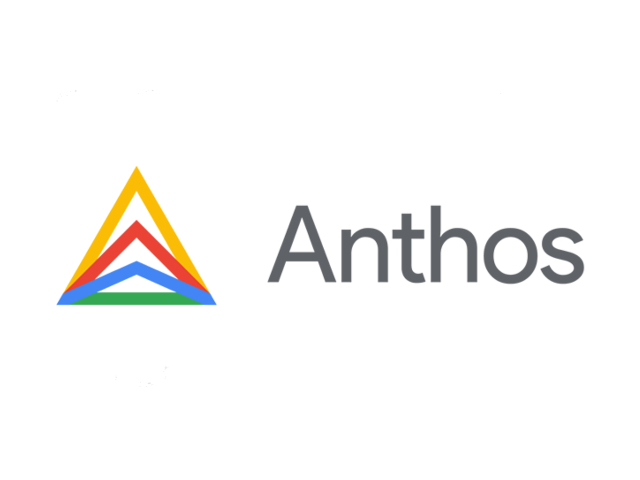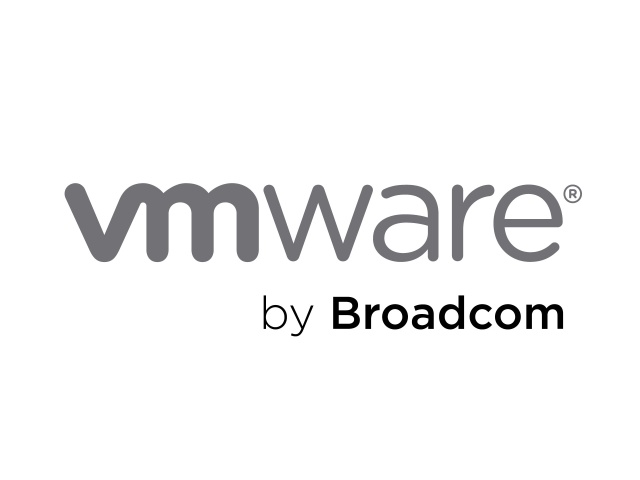Our recent collaboration with Google offers a compelling opportunity for our joint customers to go “ground to multi-cloud” for their Kubernetes workloads from an efficient, scalable and secure private cloud platform.
Every cloud survey will tell you the same thing. Large organisations, even those with a stated desire to move 100% to public cloud are, in fact, actually building a running in a hybrid cloud model, with certain workloads unsuited to move from an on-premises deployment, whether for performance, cost, regulatory or security reasons. Those same surveys will also tell you that most organisations have relationships with more than one hyperscaler today. Dig a little deeper though and you quickly discover that, for most, these relationships are deeply siloed - sitting alongside each other with workloads rarely, if ever, freely able to be moved between them.
A Cloud Centre of Excellence cameo
So, while by its nature it’s a generalisation, let’s paint a cameo and explore the options.
Our Cloud Centre of Excellence (CCoE) team, (a cross-functional strategic advisory team, now common in most large organisations) have evaluated our options and has concluded:
We have an ongoing need to run our own infrastructure. While some existing workloads are well suited to be re-architected to be “cloud native”. We need to be able to support the ones that aren’t, plus the ones that can’t move to the public cloud. At the same time, new applications (wherever they will ultimately reside) are highly likely to be built to be “cloud first”, so this on-prem. Infrastructure needs to deliver that cloud-like experience to support this.
A strategic objective of running workloads wherever it is most efficient to do so, with the public cloud being the best choice for many
A strategic objective is to increase agility and reduce reliance on any single hyperscaler by embracing a true multi-cloud model - not just between hyperscalers, but that encompasses our private cloud when that makes sense too, embracing a “ground to cloud” philosophy.
Google Anthos, hybrid and multi-cloud
It’s a topic we’ve recently been discussing with Public Sector facing teams at Google.
In fact, customers in this sector have some of the most complex infrastructure requirements, often with many decades of legacy application and workloads to accommodate, often under tight regulatory and security controls. The Google team too have identified a need to extend their cloud capability into trusted, auditable and efficient on-premises infrastructure. Infrastructure that, not only can be owned and operated by the end customer in the way that they choose but, from a physical layer all the way up to the application layer, can provide the level of audit and assurance that their most security-sensitive customers require.
And the glue that so neatly achieves these goals? Google Anthos, running on SoftIron HyperCloud.
How do HyperCloud and Anthos together solve the issue?
For containerised, Kubernetes-based applications, Google Anthos provides an abstraction and orchestration layer within which these applications can be deployed and managed. Wherever you have Anthos running you can deploy, move to and/or scale your applications, whether that’s on Google Cloud Platform, another cloud provider running Anthos, or indeed your own private cloud running in your own data centre or co-lo facility.
At Google’s request, we’ve tested Anthos running on HyperCloud and it works seamlessly.
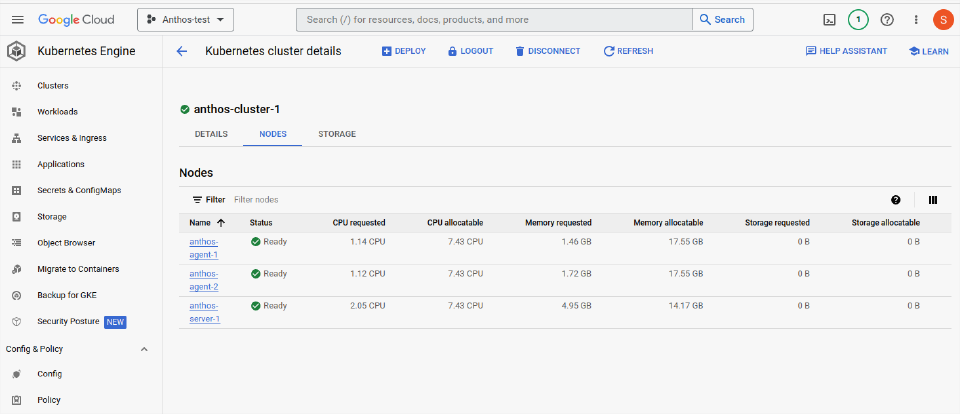
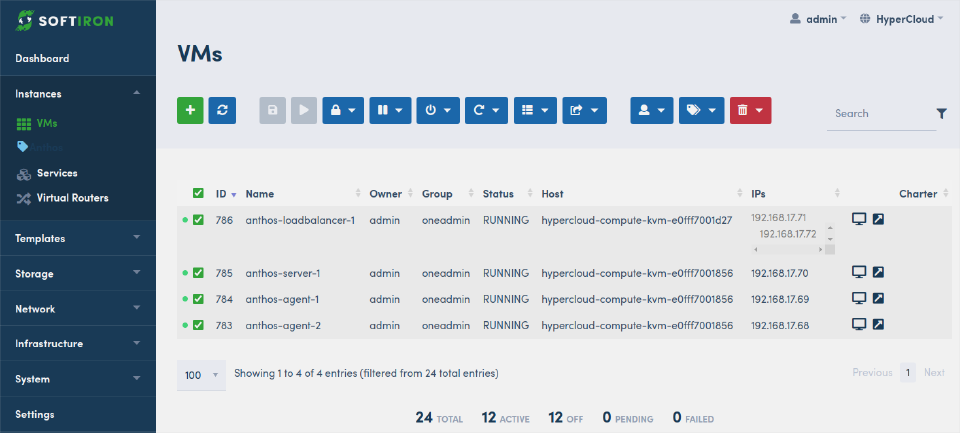
But there’s more. Anthos is Kubernetes-specific, making it a great choice for organisations whose dominant deployment model is containers. However, when applications are difficult to containerise, HyperCloud provides the same unified platform on which to deploy them.
Altogether, this makes Anthos and HyperCloud well suited to complex hybrid and multi-cloud environments. One set of data infrastructure to deploy, scale, manage and consume. One set of infrastructure to assess, audit and apply appropriate security controls.
For Google customers, this provides a much more compelling proposition to the fixed configuration “satellite cloud hardware” type offers from other hyperscalers, or dealing with complexity challenges and hardware obfuscation that comes from bare metal provisioned type solutions, running set configurations and versions of “approved” operating systems and other software. It enables them to solve all three of those strategic objectives we painted in our cameo:
- On-prem. “Cloud first” infrastructure, that meets the demands of workloads that must stay on-prem., but also the demands of newer cloud-native applications
- The ability to freely move cloud-native workloads to anywhere that is running Anthos
- The ability to build a true multi-cloud strategy, not just between hyperscalers, but also fully incorporating the simple, efficient, and in many instances potentially more cost-effective, on-prem. private cloud that I own and operate, independent of any one hyperscaler.
Unlocking HyperCloud’s value for Anthos on-prem
HyperCloud challenges the conventional wisdom of what it takes to build and more importantly live with your own private cloud. Leveraging HyperCloud means, for example, one software stack to upgrade, secure and report on. One unified fleet of hardware, sharing the same common “DNA” - architecture, firmware, and OS, no matter what type of compute, network or storage they deliver.
This is transformative.
Complete transparency and ability to audit every element of cloud infrastructure. An architecture that is secure by design and can be supported by IT generalists from in-house teams if needed. Security audits were enhanced and security controls were radically simplified.
A set of opinionated and optimised tools and features that help govern, manage, and operate containerized workloads at an enterprise scale
Compare the alternative
Traditional IaaS and HCI (which is really just IaaS with disk sharing) are built out of many distinct software products sold as a single unit. Compliance and security challenges arise due to the surface area presented by these sprawling stacks of interrelated software products. Some of these products even have to run separate applications to manage their upgrades because they cannot upgrade themselves! Unlike traditional IaaS and HCI solutions which are a mishmash of products placed on top of antiquated hypervisors, HyperCloud is a complete infrastructure designed for the Cloud and the regulatory and security challenges of operating in the Cloud.
Transparency and audibility
You may be running an approved hardware platform configuration, but regardless of the logo on the front of the server, just where did that “bare metal” get manufactured? Under whose direct or indirect control? What components exactly were used to build it? Where did the firmware come from and can you audit the source code? What about the operating system? Where did it come from and if you care about sovereignty, and how exactly can you audit it all? And just how many additional layers of third-party software will be required to be deployed and lifecycle managed - all while retaining the security required to assure sovereignty.
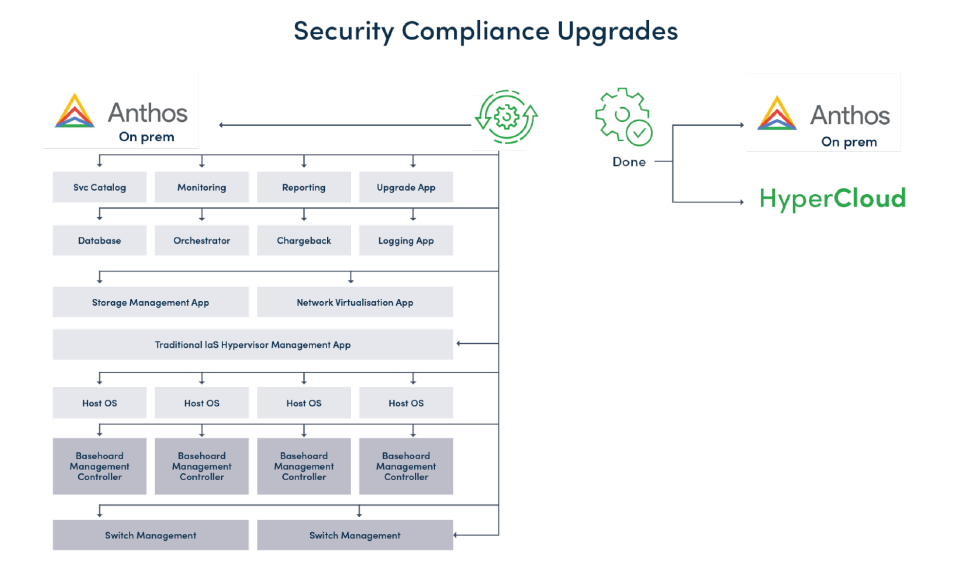
HyperCloud has fewer loosely-coupled moving parts, which means dramatically less time is required to plan, install, manage and upgrade compared to traditional IaaS and HCI. Less time spent working behind the scenes on your on-prem Cloud means faster time to value and happier customers.
If you’ve already identified Google Anthos as a key part of your multi or hybrid cloud strategy and are considering the most efficient and effective way to build “ground to cloud” upon that, then HyperCloud as a single unifying platform for your on-prem (or co-lo) deployments is definitely worth your consideration.
And to understand more about the work we’re doing with Google, specifically in Government and public sector, my colleague James Rickard digs into this in a partner to this post, here.
To understand more about the topics discussed in this, or to discuss how Anthos can be deployed and run on HyperCloud, contact us to set up some time to talk.
